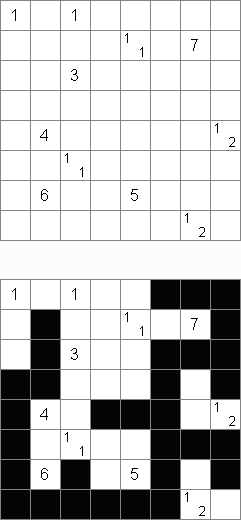
Tapa is a logic puzzle created by Serkan Yürekli (Turkey). The goal is to blacken some cells of the grid. All the black cells form one contiguous region. No 2 x 2 cell area within the grid can contain all black cells. Clue cells with numbers may not be filled in and tell the length of each consecutive black cell block in the eight surrounding cells. If there's more than one digit in a cell, the groups of black cells have to be separated by at least one white cell. Question marks can be used instead of clue numbers. Each question mark can represent any nonzero integer.

Cross+A can solve puzzles from 4 x 4 to 24 x 24.
There are many variations of the Tapa puzzle. Some of them can be solved by Cross+A.
Tapa [Line]: there may not be four consecutive black cells in any row or column.
![Tapa [Line]](../images/tapa1.gif)
No Squares Tapa: no 2 x 2 cell area within the grid can contain all white cells.
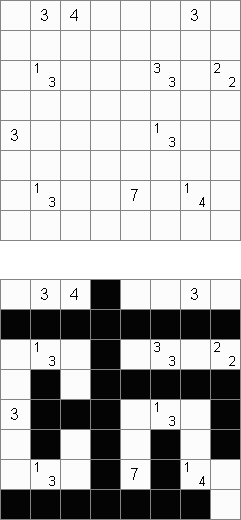
Equal Tapa: the amount of white cells (except clue cells) must be equal to the amount of black cells.
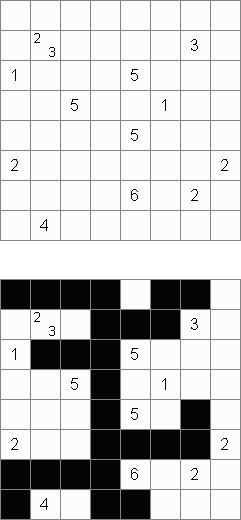
B&W Tapa:
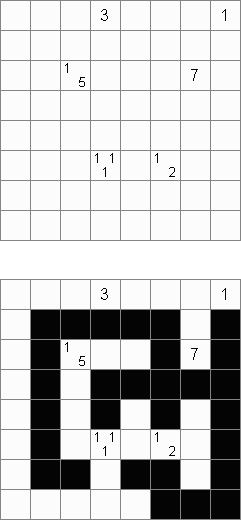
Tapa Islands:
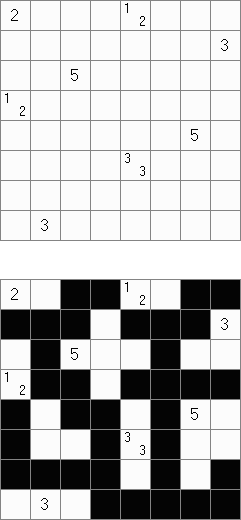
Pata: the clues indicate the groups of connected white cells that are around the square; different groups of white cells are seperated by at least one black cell.
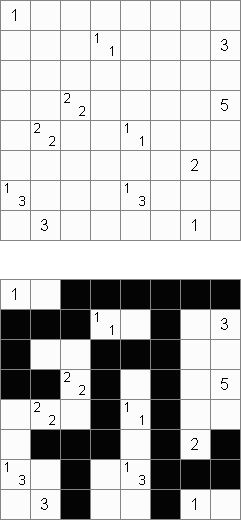
In Tapa Balance the amount of black cells in the left part of the grid is equal to the amount of black cells in the right part. Clues and white cells are considered weightless.
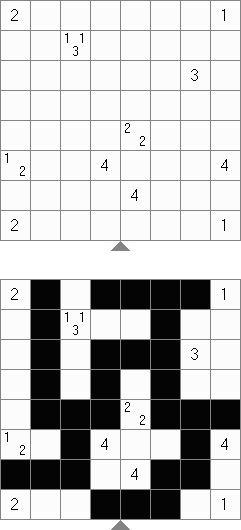
Tapa Row: the sum of all clue digits in the row is equal to the amount of black cells in this row.
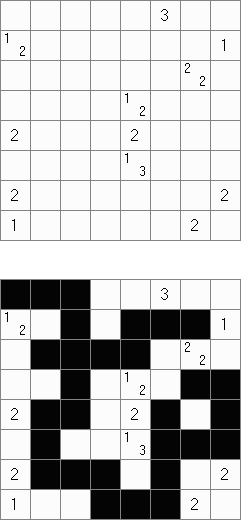
Tapa 1-n: all rows and columns should contain different amounts of black cells.
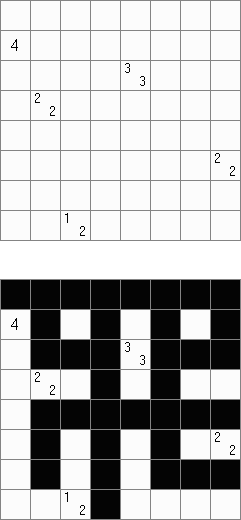
In Dissected Tapa black cells and white cells form two congruent figures. Two figures are congruent if they have the same shape and size.
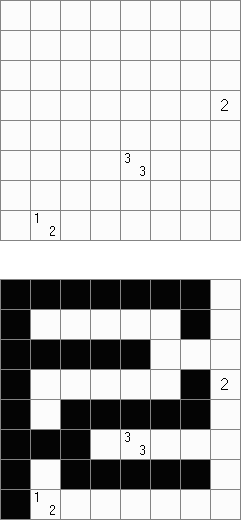
Tapa [Diagonal Neighbors]: every black cell must have at least one diagonally adjacent black cell.
![Tapa [Diagonal Neighbors]](../images/tapa11.gif)